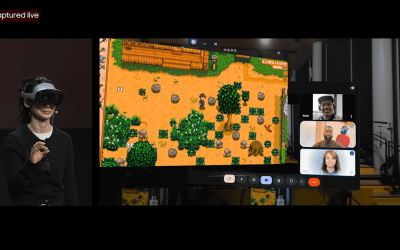What if building complex hardware were as seamless as writing software, no in-house team needed, and lab equipment was open-source, modular, and built to last? Delving into these questions, Vybhav Nag of Craft Power shares how the company is bridging the gap between innovation and execution with EFY’s Nitisha Dubey.

Q. How does Craft Power demonstrate expertise across its core business areas?
A. Craft Power focuses on three core business areas: developing open-source laboratory equipment, operating as a hardware product design house, and providing comprehensive Internet of Things (IoT) hardware solutions. These cover everything from making tools more accessible to building and testing hardware quickly, all the way through to helping clients develop complete hardware products.
Q. Can you elaborate on these three business areas?
A. Our journey began with developing lab equipment to democratise access to electronics education and hobbyist tools. Our first product—a modular, open-source, right-to-repair lab bench power supply—was funded under the NIDHI PRAYAS scheme. Since then, we have added tools like signal generators, battery emulators, programmable power supplies, and electronic loads.
We also operate as a full-stack hardware design house, helping clients take ideas from conceptualisation to early-stage manufacturing. This includes feasibility studies, detailed design, prototyping, and production guidance.
Lastly, we deliver IoT hardware systems, building sensor-based platforms for various applications. While many firms focus on software, Craft Power provides the hardware backbone for robust, flexible IoT ecosystems.
Q. Who is your target audience?
A. We mainly work with startups in artificial intelligence (AI), IoT, agritech, and electric vehicles (EVs), where in-house hardware expertise is often limited. We also collaborate with established enterprises and multi-national companies (MNCs) as their outsourced research and development (R&D) partner, including mid-sized IT firms and R Logic, a leading LCD repair company in India.
Q. What type of products do you design, and how is your design house structured?
A. We support full-cycle product development for electronics and embedded systems. After a feasibility study, projects are split into three domains: mechanical, electronics, and embedded software. Each progresses in parallel using a hardware-software co-design approach, blending agile and waterfall methods. Rapid prototyping is standard, using tools like modern printed circuit board (PCB) software, computer numerical control (CNC) machines, Fusion 360, and 3D printing. Firmware is developed using VS Code, Arduino, PlatformIO, STM Cube, ESP-IDF, or MPLAB.
Q. Does Craft Power also offer manufacturing services?
A. No, we do not manufacture in-house. Instead, we work with EMS partners to support early batch manufacturing, typically five to 500 units, while our team stays involved to resolve issues before full-scale production.
Q. What is your typical design process from concept to execution?
A. It starts with an engineering feasibility study. Once confirmed, the project is developed in parallel tracks—mechanical, electronics, and embedded software—each going through design, prototyping, and review loops. After proof of concept, we assess manufacturing feasibility through design for manufacturability (DFM), design for assembly (DFA), design for testing (DFT), and, if needed, design failure mode and effects analysis (DFMEA).
Q. How do you integrate user research or usability testing?
A. Usability testing is integral, especially for consumer and industrial electronics. For novel products like smart battery management systems (BMS), we gather end-user input and create a product requirements document before design begins.
Q. Do you follow any specific design methodologies?
A. We use a hardware-software co-design approach that mixes agile and waterfall models. Each domain iterates independently, enabling efficient, targeted refinements.
Q. What tools and software do you use for design and prototyping?
A. For mechanical design, we primarily use Fusion 360, with occasional use of SolidWorks. Electronics are designed in KiCad, Eagle, or Altium, and embedded programming is done using Python or C in environments like VS Code, Arduino, PlatformIO, STM Cube, and ESP-IDF.
Q. Do you develop proprietary design systems?
A. We usually adapt to industry-standard systems but are developing internal design flows to speed up delivery and go-to-market timelines.
Q. What new technologies are you currently exploring?
A. We are working on deploying AI models on IoT edge devices (AIoT) and developing a module that allows different used batteries to work efficiently together, similar to MPPT systems in solar tech.
Q. Are you open to working with large companies?
A. Absolutely. As I said earlier, we are already partnering with organisations like R Logic for automated fault detection systems and with an IT firm on audio hardware for an AI-powered application.
Q. How closely do you work with developers and clients during a project?
A. Our core team of four handles mechanical, electronics, embedded software, and project management. Clients are involved from the start through weekly updates, ensuring transparency and reducing end-stage surprises.
Q. How do you manage scalability, performance, and security in your designs?
A. Industrial projects follow Institute of Electrical and Electronics Engineers (IEEE) standards, and consumer tech goes through DFM, DFA, and DFT evaluations. For performance, we offer different architectural options. Security-wise, proprietary designs stay on in-house systems, freelancers sign contracts, and sensitive work is done only in physical labs.
Q. How do you manage your team and resources?
A. We keep the team lean, with no one allocated beyond 60%. We limit projects to two or three at a time and bring in freelancers or paid interns to stay flexible without bloating.
Q. What is your approach to hiring and continuous learning?
A. We look for ownership, adaptability, and a desire to learn. Team members gain experience through internal R&D projects before handling complex client work.
Q. Is there a formal quality control process?
A. Instead of final reviews, we involve clients throughout development with weekly check-ins. This ensures continuous feedback and minimises last-minute surprises.
Q. How do you handle project timelines, payments, and deliverables?
A. Timelines are typically 25–30% faster than traditional hardware cycles. Payment is milestone-based with upfront advances. Dedicated resources can speed up timelines further, at a higher cost.
Q. What is your current lab setup, and where is it located?
A. Our main lab is in Rajajinagar, Bengaluru, repurposed from a family-owned godown. It is equipped with CNC machines, 3D printers [stereolithography (SLA) and fused deposition modeling (FDM)], laser engravers, oscilloscopes, signal generators, electronic loads, and programmable power supplies. We also work out of Derby, our incubator space.
Q. Can you share a project that posed unique technical challenges?
A. A smart BMS project needed thermal management in a compact form factor, so we designed a metal enclosure with increased surface area for passive cooling. Another challenge was a repair line fault detection system that required working around proprietary tech with unconventional methods.
Q. How do you stay updated with evolving technology and design trends?
A. We stay current by working with early-stage startups and testing emerging tech in-house. Real-world prototyping helps us gain deep, actionable insights.
Q. What has been your growth like since inception, and what are your plans?
A. Our first fiscal year (2023–24) focused on team and capacity building, and we achieved 85% of our revenue target. Over the next two years, we aim to double or triple our revenue through strategic projects and enhancements to our strengths.









